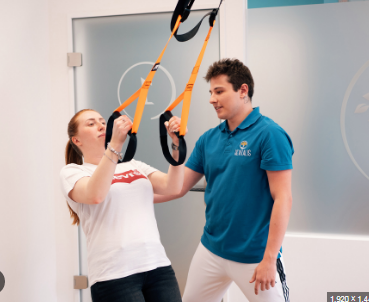Physical Therapy on Equipment Munich: Targeted Rehabilitation to Restore Strength and Mobility
Physical therapy is a critical step in recovering from injuries, surgeries, or chronic conditions. When it comes to targeted rehabilitation, equipment-based Physical Therapy on Machines Munich (Krankengymnastik am Gerät München) offers an effective and precise approach to restore strength and mobility. Using specialized tools and machines, therapists can deliver personalized treatments that cater to individual needs, making recovery smoother and more efficient. This post explores the numerous benefits of equipment-based physical therapy and why it is a valuable path toward wellness.
The Role of Equipment in Physical Therapy
Modern physical therapy employs advanced equipment to enhance the recovery process. Whether you’re dealing with ligament injuries, muscle imbalances, or post-surgical stiffness, equipment-based therapy accelerates rehabilitation by focusing on specific needs. Machines are designed to introduce controlled movements and resistance, helping patients regain strength, improve mobility, and prevent further injuries under professional guidance.
The precision offered by the equipment ensures exercises are performed with the correct posture and technique, which is vital in avoiding strain or re-injury. It also allows therapists to monitor progress and adjust routines based on real-time feedback.
Benefits of Equipment-Based Therapy
Physical therapy can be transformational, and incorporating equipment takes it to the next level. Here’s how it makes a difference.
1. Precision in Targeted Rehabilitation
Equipment enables therapists to focus on specific muscle groups, joints, or movements. Exercises can be tailored to target weak areas while considering the patient’s physical limitations. For example, adjustable weights or resistance bands allow for gradual progression, strengthening the body step by step.
This precision ensures that every therapy session is directed toward measurable improvement, reducing wasted effort and enhancing outcomes.
2. Faster Recovery Times
By systematically strengthening the muscles and improving joint mobility, equipment-based therapy often leads to quicker recovery times. Machines can simulate real-life movements and low-impact exercises that expedite improvement without overexertion.
Gradual progression means patients regain functionality in a monitored and safe manner, making the recovery process both efficient and reliable.
3. Comprehensive Mobility Restoration
Mobility issues are not limited to the injured area. Stiffness or pain can spread to other parts of the body due to compensatory movements. Equipment-based therapy tackles this by encouraging balanced and fluid movements.
For instance, elliptical trainers, balance boards, or resistance cables help improve overall coordination and motor skills, while equipment like stationary bikes focuses on the lower body, aiding an easier return to regular activity.
4. Progressive Strength Building
Recovering patients often experience muscle atrophy, where muscles shrink or weaken due to inactivity. Equipment therapy helps rebuild muscular strength with structured exercises. Machines provide an advantage by allowing customizable resistance levels.
Patients grow stronger as therapists incrementally increase resistance, ensuring consistent progress suited to their stamina and condition.
5. Injury Prevention
The targeted approach of equipment therapy helps patients understand their physical thresholds and improve posture, two key factors in preventing future injuries. Through gradual resistance training and balance drills, one can learn to avoid overstraining muscles and minimizing physical vulnerabilities.
For athletes or individuals involved in strenuous activities, it serves not just as a path to recovery but also as a preventive mechanism to steer clear of future setbacks.
6. Pain Management
Pain often accompanies injuries and immobility, significantly affecting quality of life. Equipment therapy introduces low-impact exercises that encourage movement without causing discomfort.
Strengthening surrounding muscles also supports weaker areas, alleviating stress on joints and reducing pain. Over time, patients regain confidence in their physical abilities, reducing dependency on medications.
